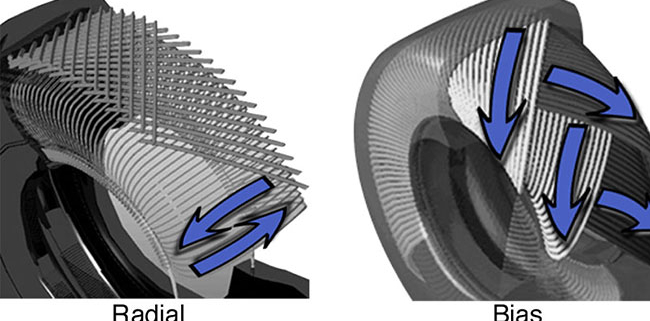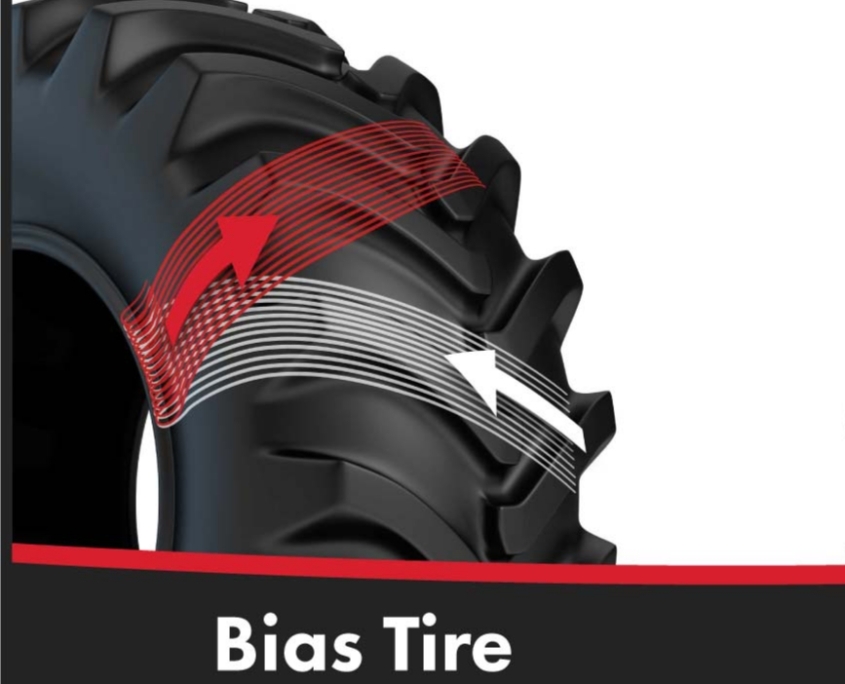Bias Tires
When picking tires for your vehicle, there is more to it than just getting the right size for your needs. Tire construction should also be taken into account.
The terms “Radial” and “Bias” are used to describe the internal construction of a tire. The difference between them may seem small, but it has a significant impact on how the tire performs. We have talked about radial tires in the past; therefore, we discuss bias tires in this article. Afterwards, a comparison between the two types is made. Finally, the paper examines which kind is better for drivers today.
What are Bias Tires?
The construction of their inner plies distinguishes bias tires. A tire ply is a layer inside the tire that can be constructed of various materials, including rubber, steel, nylon, and fibreglass. The plies may also consist of a combination of these materials. After one layer is laid, another layer, or ply, is added. Multiple plies offer tire versatility and durability, and these plies change based on the tire’s intended usage.
As the name suggests, Bias tires are constructed with the plies on a bias (or a slant). This means that the plies are crisscrossed across the tire from one bead to the other, usually at a 35 to 40-degree angle to the centerline. The benefit of bias tires is in their ability to tackle rough roads without sacrificing ride comfort.
Benefits, Risks, and Uses for Bias Tire
- Pros of Bias Tire
- The entire body of the tire flexes easily, making for a smooth ride on rough surfaces
- Less expensive
- Good traction at slow speeds and while travelling in a straight line
- A thicker sidewall is more resistant to cuts and punctures
Cons of Bias Tire
- High friction with the road means:
- Tread wears faster
- High rolling resistance
- Higher fuel consumption
- Can lose traction while cornering due to “roll-over.”

Radial-vs-Bias
Let’s take a closer look at the differences between bias-ply and radial tires and the situations where one or the other will have the advantage.
The main difference between the tire construction types is how the plies are laid out, although the cord materials can differ.
So what difference does this make? Well, for one thing, the tire is less flexible as a whole. That’s because, in this construction, the sidewall and crown plies are not separate, and you end up with a thick ply layer all over the tire. However, this also means these tires are pretty tough and resistant to punctures (one reason they’re great for heavy equipment).
- Radial Tires
- More fuel-efficient
- Expensive
- Excellent Traction
- Increased Durability
- Susceptible to Damage
- Can Be Difficult to Repair
- Low Load Capacity
- Bias Tires
- Less fuel-efficient
- Cheap
- Weak Traction
- Less Durable
- The Extra Layers Help to Protect Against Damage
- Can Be Difficult to Repair
- High Load Capacity
WHICH IS BETTER! RADIAL OR BIAS?
Radial tires offer better performance, fuel consumption and comfort over bias tires. Although more expensive, savings on fuel and their durability make them more cost-effective. If you own a non-commercial use vehicle, radial tires are the best option. Most of the tires, today, have a radial construction.
Tires in the construction and agricultural machinery still use bias tires most of the time. Even owners of classic cars use bias tires. However, if you neither own a classic car or heavy machinery, radial tires are a perfect choice.


 Coreseal technology
Coreseal technology تولید فیلم پلیمری ساخته شده از مواد طبیعی
تولید فیلم پلیمری ساخته شده از مواد طبیعی
Leave a Reply
Want to join the discussion?Feel free to contribute!